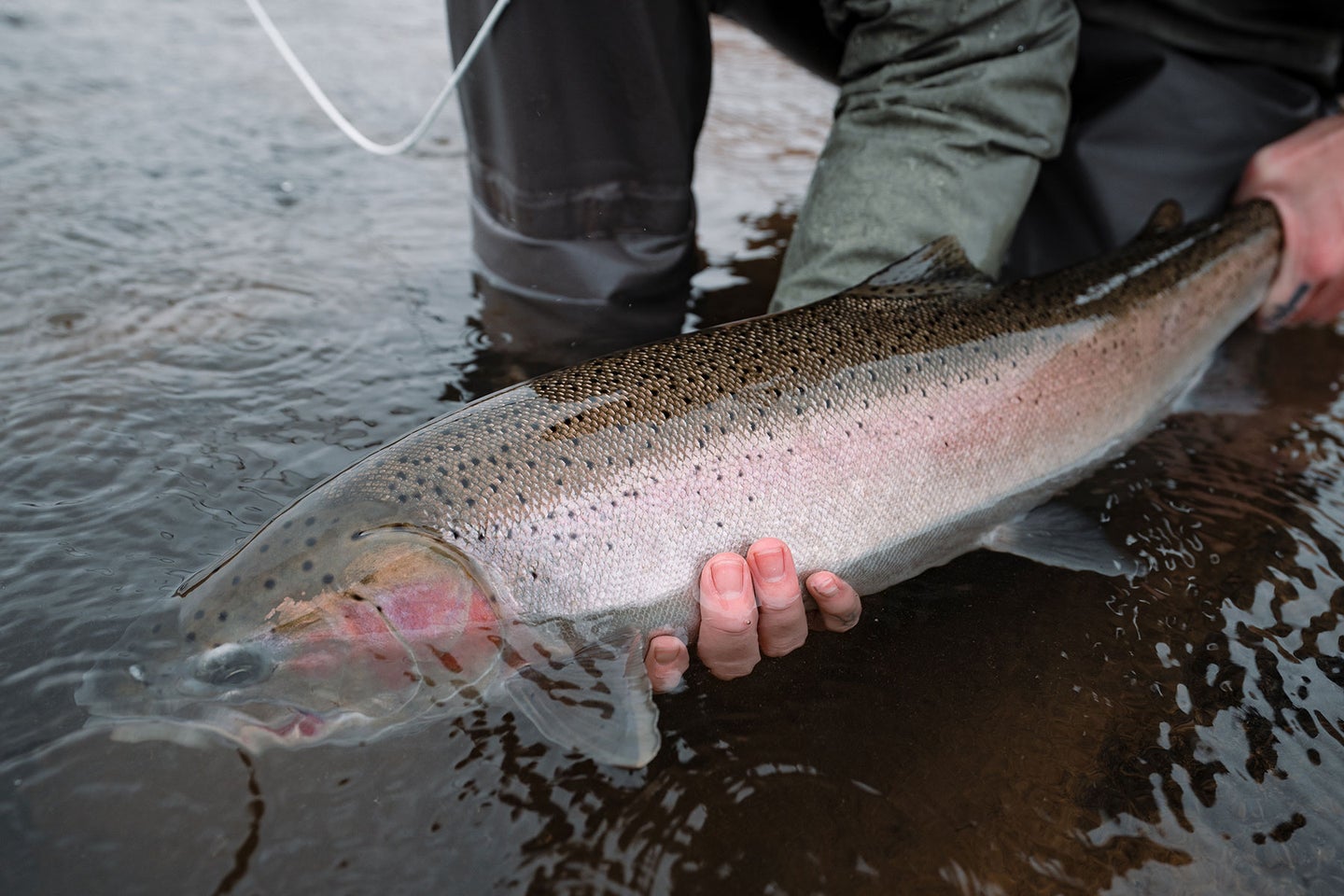Oregon River Sees Best Steelhead Run in 20 Years

Steelhead are anadromous rainbow trout that venture out to sea to forage before returning to the freshwater tributaries where they were born to spawn. Adobe Photostock.
Anglers in the Pacific Northwest have reason for optimism after biologists in Oregon recored the best return of sea-run rainbow trout to the Upper Willamette Basin in two decades. The news comes just seven years after fishery managers counted the lowest run ever on the Willamette, with roughly 820 fish returning to spawn in 2017. Reports from earlier this month say that some 7,700 steelhead climbed a fish ladder at the Willamette Falls near Oregon City this year, and that number has likely grown since then.
Learn how to subscribe to the new Field & Stream magazine here!
In an article published by the Salem Statesman-Journal, Army Corps of Engineer biologists Greg Taylor said improved conditions in the Pacific Ocean might be driving the uptick in steelhead returns. That includes cooler water temperatures and better availability of food sources for steelhead when they migrate out to sea to forage.
On April 9, Northwest Sportsman reported that a total of 7,774 winter steelhead had made their way through the fish ladder near Oregon City, and that 98 percent of those fish were wild steelhead. Wild fish are distinguished from hatchery fish by the presence of an adipose fin, which hatchery fish lack.
According to NOAA, more than a million salmon and steelhead once returned to Oregon’s Willamette River Basin, but the anadromous fish have suffered massive declines since then. And the basin’s steelhead were listed as threatened on the federal Endangered Species List in 1999. Their dipping populations can be attributed to a variety of factors including habitat degradation, over-harvest, and the severing of ancient spawning routes by hydro-electric dams.
When steelhead runs reached an all-time low in 2017, with just 822 fish climbing the ladder at the falls in Oregon City, conservationists and biologists were worried that the species could become extinct from the Upper Willamette Basin altogether. Concerns grew from there after a herd of sea lions began targeting and preying on the fish as they gathered to migrate across the ladder. Forty-six sea lions were killed in 2018 to help the struggling fish rebound. According to the Salem Statesman-Journal, an official with the Oregon Department of Fish & Wildlife (ODFW) said the federally-sanctioned sea lion culling program likely played a role in helping steelhead numbers bounce back to current levels.
Read Next: Feds Approve Largest Dam Removal Project in the U.S. History
The majority of the fish returning to the Willamette this spring are what’s known as “winter steelhead.” These are full-grown fish that are ready to spawn, unlike “summer steelhead,” which can return to freshwater before they’re sexually mature. According Trout Unlimited, winter steelhead can spawn within days of entering freshwater tributaries. After they move through the Willamette Falls fish ladder, they’ll spread out through the drainage to spawning tributaries that include the Santiam, the Mollala, and the Yamhill Rivers.
The post Oregon River Sees Best Steelhead Run in 20 Years appeared first on Field & Stream.
Articles may contain affiliate links which enable us to share in the revenue of any purchases made.
